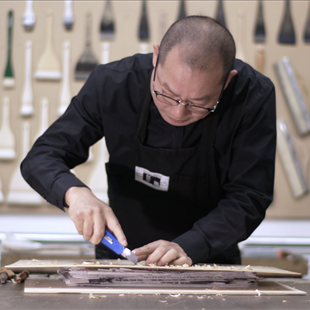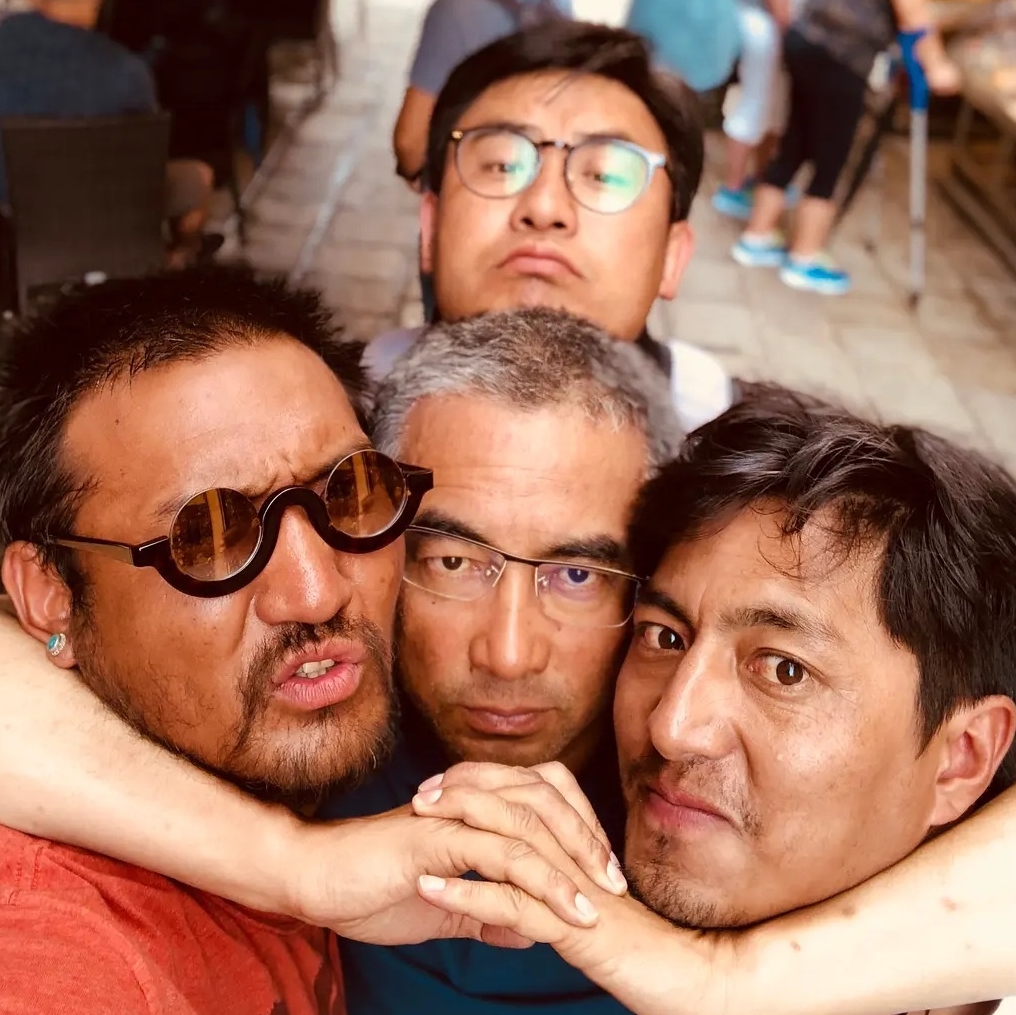Feng Mengbo: Hello, everyone! I am Feng Mengbo, a great collector. Today I am going to talk about my various collections.
This is when I was born. I turned it into an animation. This is the original photo. In around 1996, I made the first interactive device on my computer, and called it my private photo album. I have always been strongly interested in the family memories and their relationship with the collective memory of the Chinese. For example, the most popular CD ROM at that time could store the stories from my grandparents to parents, and then to our generation, plus the movie theater. Thus, there is a wealthy stock of old photos, recordings, videos, etc. of my family.
Look at this painting drew when I was young. This was saved by my mother for me which I created at the age of 4. In fact, it is hardly different from what I am doing now, because I still like fighting or something like this. Around last October, I suddenly decided to register a WeChat official account, because my friends find what I share everyday very interesting. I gave it a try. What shall we call the account? What about my daily collections and the relevant stories? But I feel the word “collector” is not cool enough, so I changed it to “A Great Collector”, a more convincing title to others.
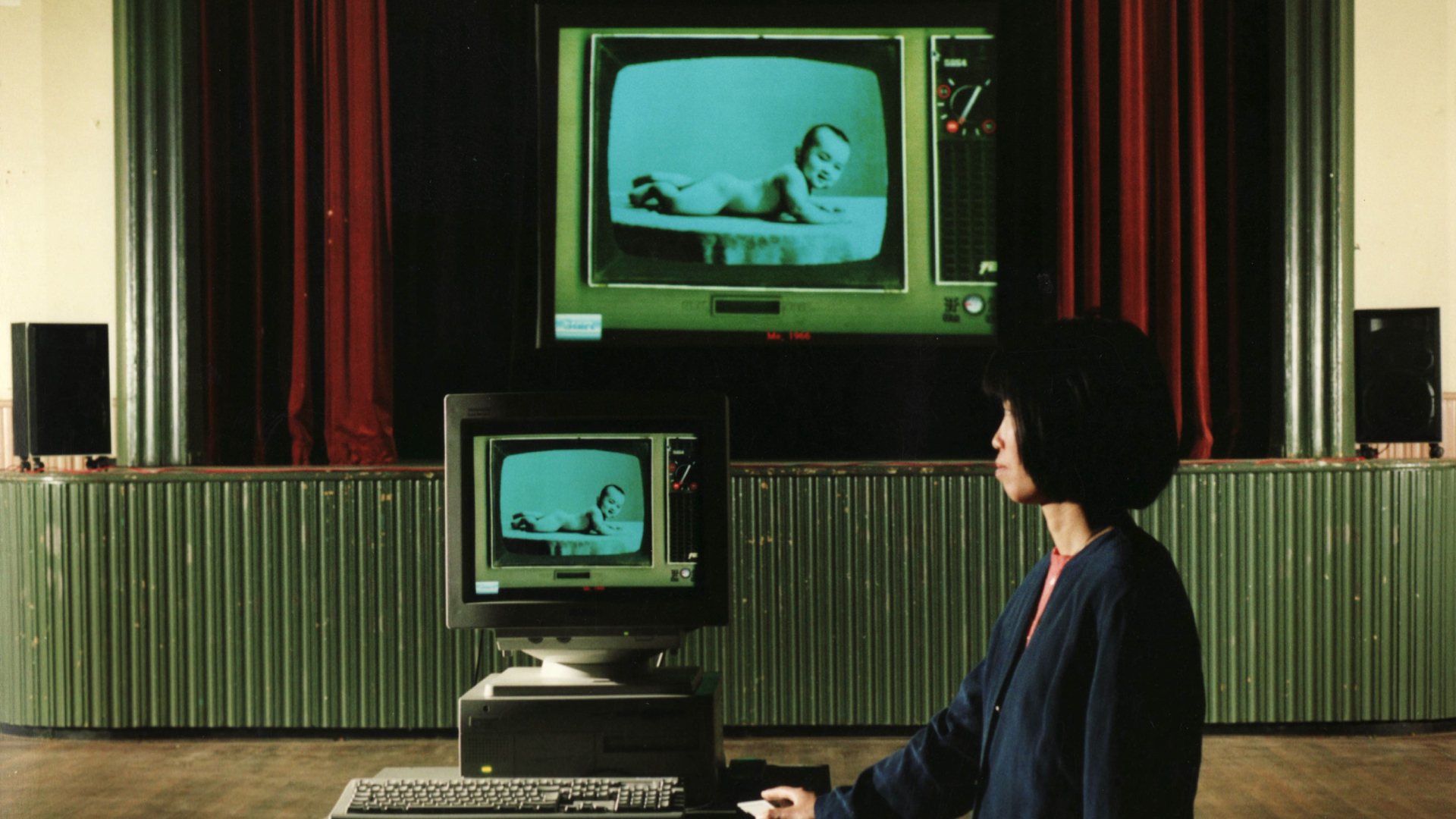
I have been operating this account for more than 6 months since last year with almost 173 issues. I write and update it every day as long as I have time and expect to reach 300 issues by the end of this year. I have planned that if there are about 300 issues of about 3,000 pages, this could be condensed into 2,000 pages, I could then publish a series of books, and, if possible, plan an exhibition.
For example, this is the first article published on my WeChat official account. It is actually about a vase in my home, a beautiful ancient shaped vase but it is plastic with the characteristics of the 1970s. What’s more, this article is about a certificate of merit I won in the first grade of elementary school, in 1973, and also saved by my mom. These photos were taken with my middle school classmates at Jingshan, and these are the poems I read when I was young. What is especially great is that one of my classmates had a mind to collect my compositions during those years, so now I can see the compositions I wrote 38 years ago. There are also previous transcripts.
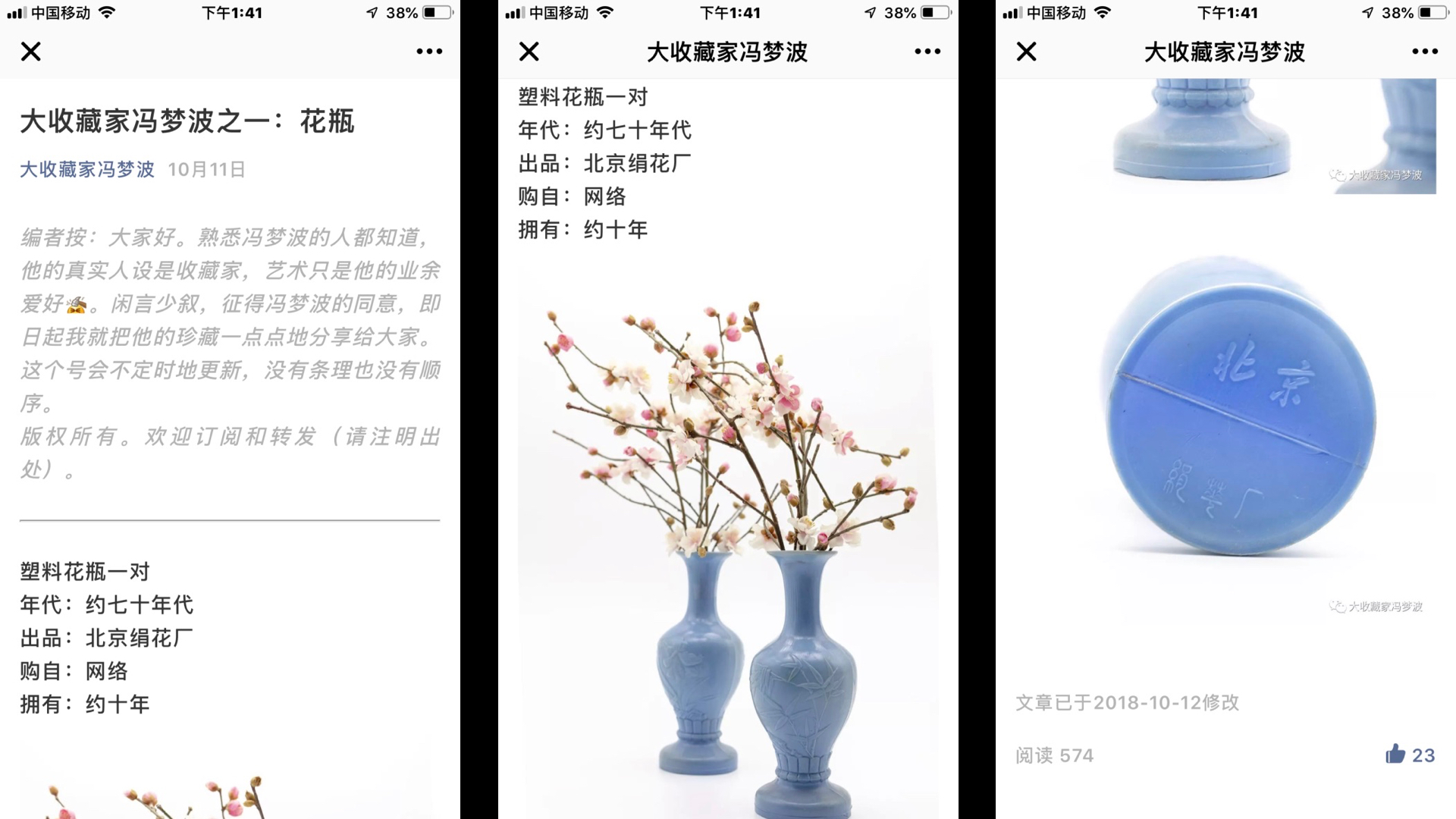
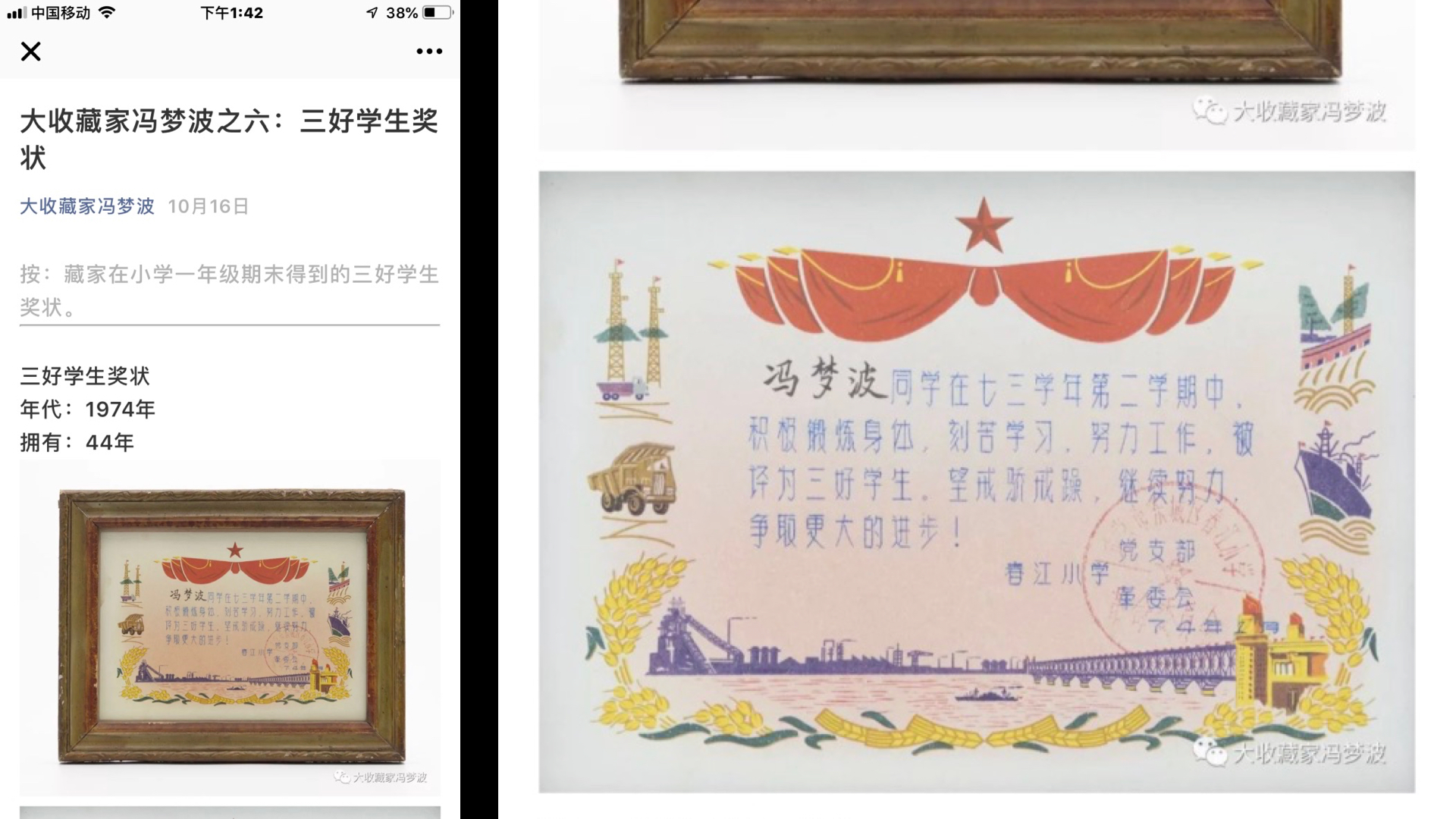
Many of these collections are related to my personal interests. For instance, when we were young, we were educated in revolutionary heroism and watched movies and dramas about wars and fighting. So, I seized every opportunity to collect such things, such as the Mauser pistol used as a stage prop during the Cultural Revolution. There are other myriad things. I have the earliest Sony AIBO. It is very versatile, connecting to the Internet, interacting with and learning from people and this could grow up gradually. Nearly a decade ago, I also brought it to the Central Academy of Fine Arts, and used it in class when I taught at the School of Design.
This is a relatively large-scale interactive game installation I made, called “Restart of the Long March”. I intended to create a work about the Long March of the Chinese Red Army. Actually I drew a series of paintings before in about 1994, including 42 series paintings drawn on the canvas with pixels. This work was unfinished at that time so I determined to turn them into a game in the future. After almost 14 years, I finally made it.
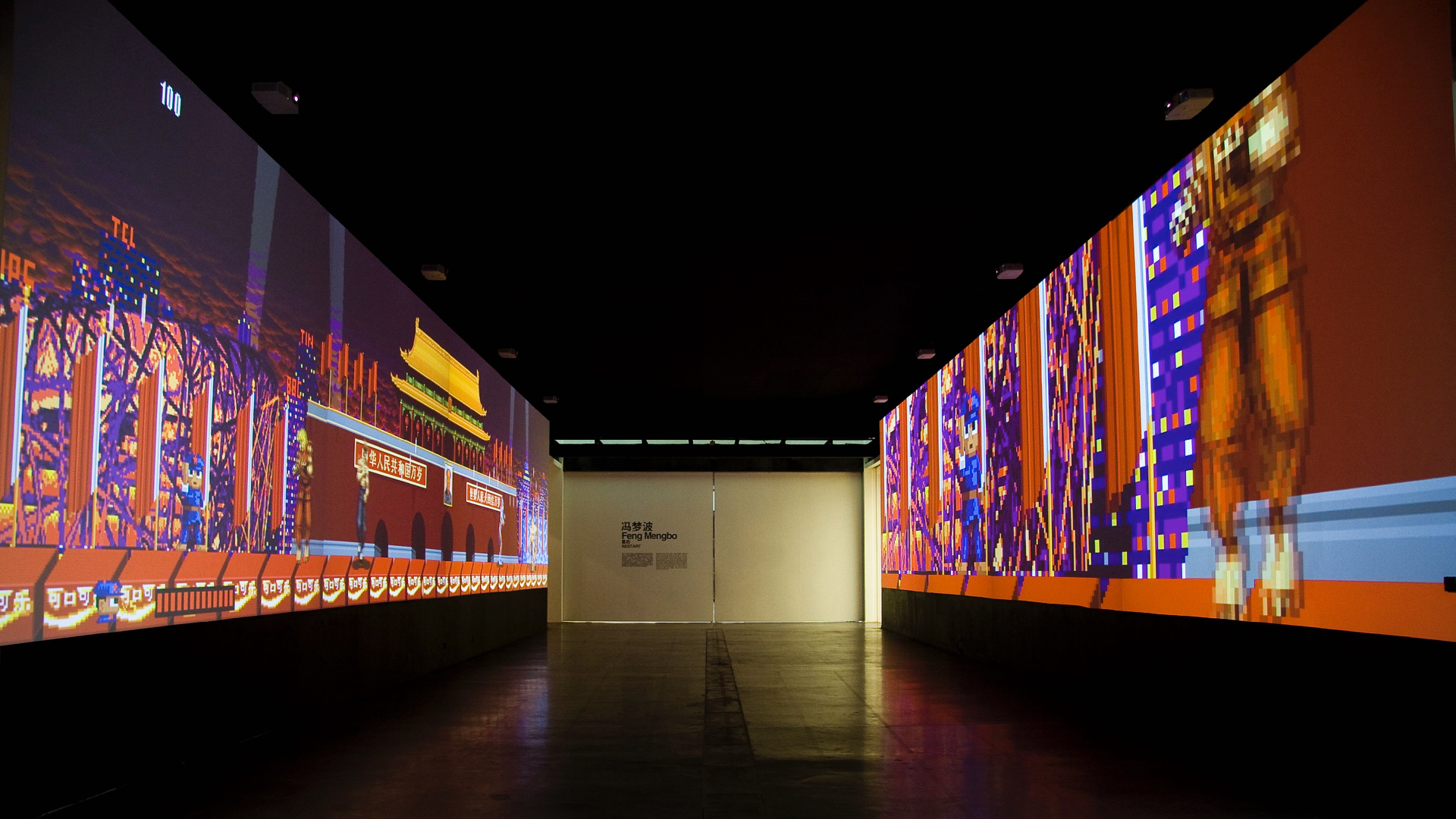
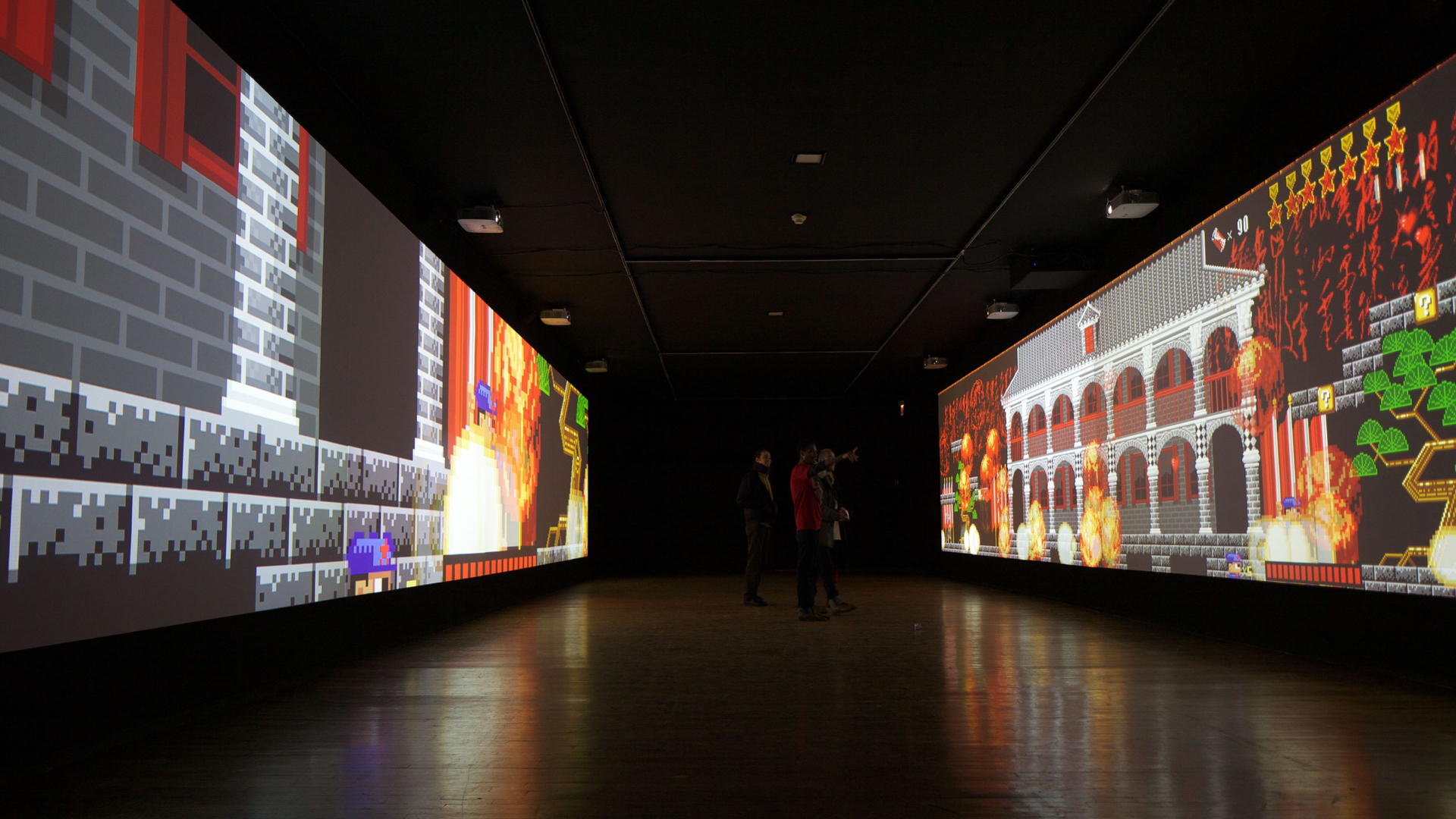
It tells the whole story of the Red Army, covering the snow mountains, grassland, Zunyi, and Yan’an, and also extending (the journey) to the 798 Art District, the Soviet Union, the United States, and even to outer space to fight against villains all over the world and finally all the villains were defeated in the Street Fighter. I have collected various kinds of video games, old machines, software, etc., which are great fun and rare. For instance, the Virtual Boy of Nintendo is very rare and in fact is the earliest VR Game.
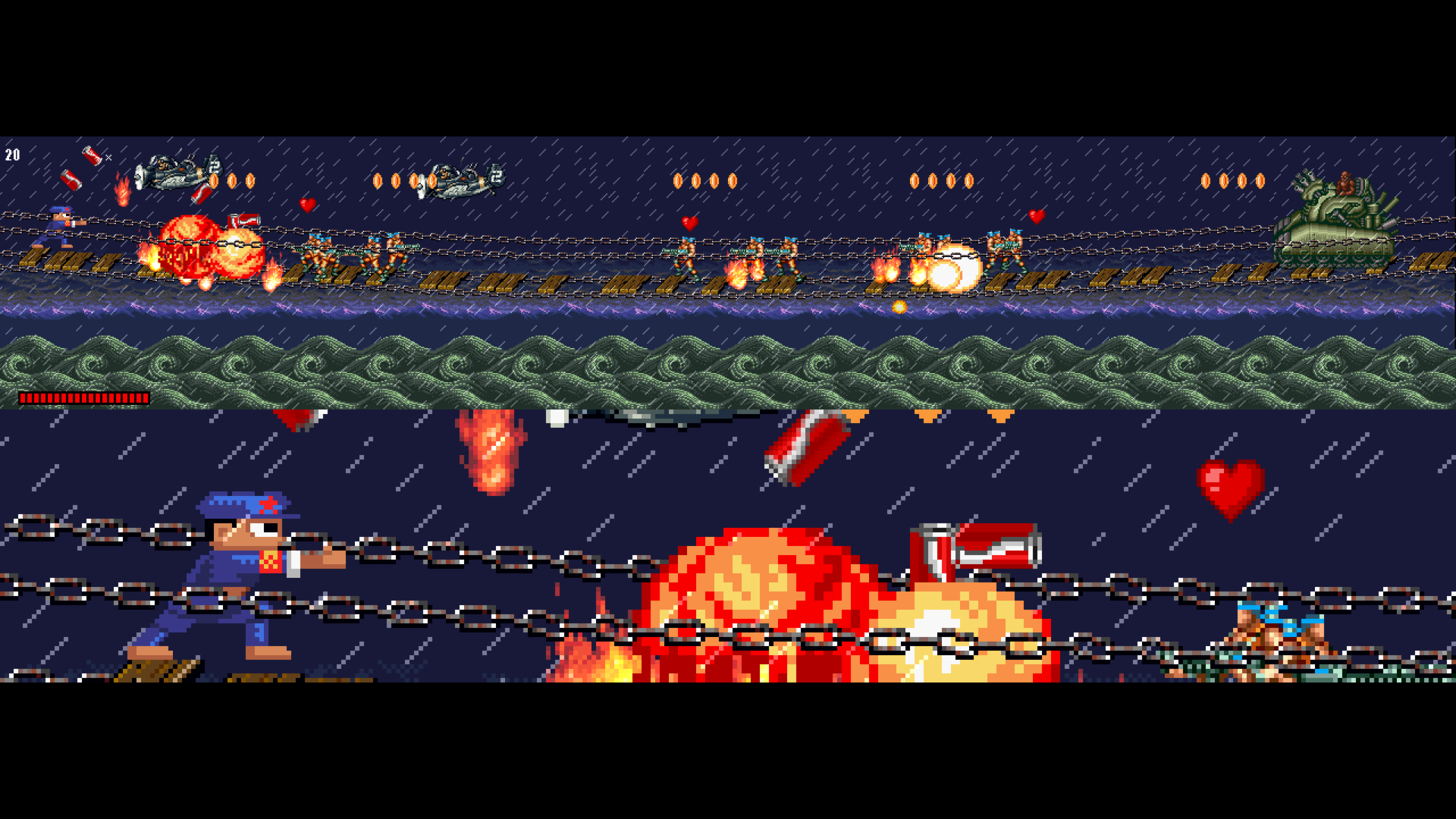
Children like to play arcade games. As an obedient child, I never went out for fun. At that time, I wished I could play arcade games at home. It is now possible, with four arcade machines in my home. As I just said, when there was no computer, I painted things I dreamed of like video games and computers.
My favorite protagonist is called Chunli because she is the only Chinese image, and a great girl. So, I matched her with the little Red Army soldier I like. I imagine this as a game I made. This “Mortal Kombat” is the second video game installation I made, and was exhibited several times, first in Iberia and then at Today Art Museum Beijing, and WF CENTRAL in Beijing, etc. It could be played by all my family members, including children, relatives and even my friends, almost 16 people. In this fighting game, you can play the dual-player mode, one character for each person.
This game is not the same as the general games. First, the game is of a huge size. And we apply a technique called Holovision, which uses glass. It means the image you see is on the glass, at an angle of 45 degrees, reflecting the projection on the ceiling. So your eyes can penetrate the glass, and see the scene behind. The scene is a real stage, demonstrating the house demolition in Beijing.
There are also special antique things in this account, like this old pickup truck my grandfather bought for me. It is a car. He bought this for me when I was very young. I also collected model airplanes and the like. These things have been badly dilapidated after so many years. The online resources are abundant. These things could be thrown away as waste, known by nobody and bought nowhere. With the benefit of the Internet, these are very conveniently available now. And take Ultraman as an example: we are familiar with it, but you don’t see what Ultraman’s life is like. You don’t know that he is also an office worker who has to serve his boss, also has to accompany him in drinking and other private information.
My interest in models and toys inspired an exhibition called “the Museum” at MADEIN Gallery in Shanghai, which consisted of models and sand tables. In this place, you see two rows of arcade machines. It seems something is under the screen which is actually called a landscape box, a thing in the museum. In front of a cabinet is glass, and those landscape and sand tables are placed there, including introductions and so on to tell stories with specific themes. There is an independent theme for each piece of work. This is called “An Underground Parking Lot”. It was inspired by the parking lot downstairs where I drive my car every day. Then I make up a story for it, such as police cars are parked at the police station upstairs, and there is a police car from Guangzhou to cover a case. It seems dirtier than other cars after a long journey. At midnight, many stray cats, dogs, and other little animals come out for fun. This is the story.
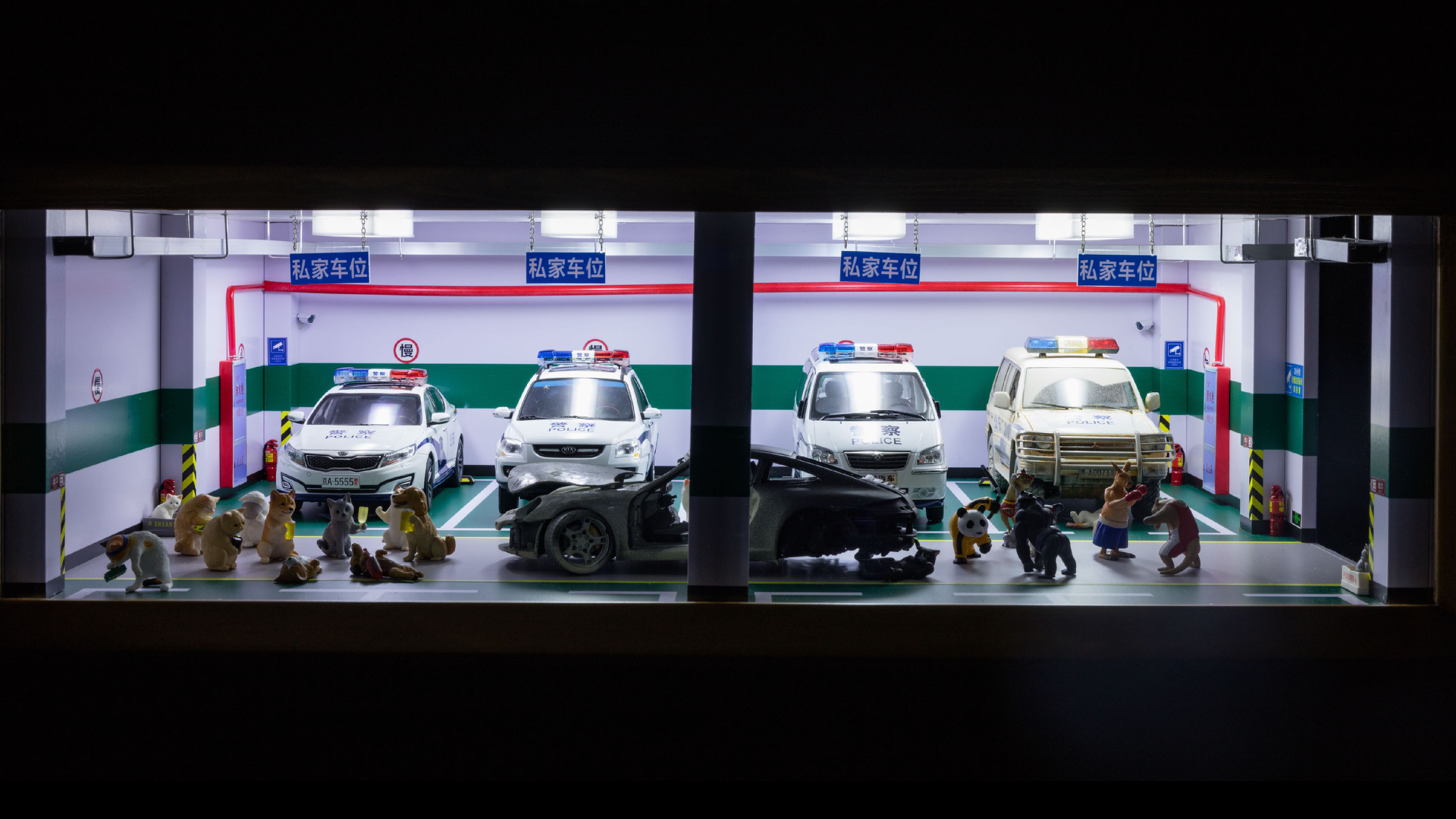
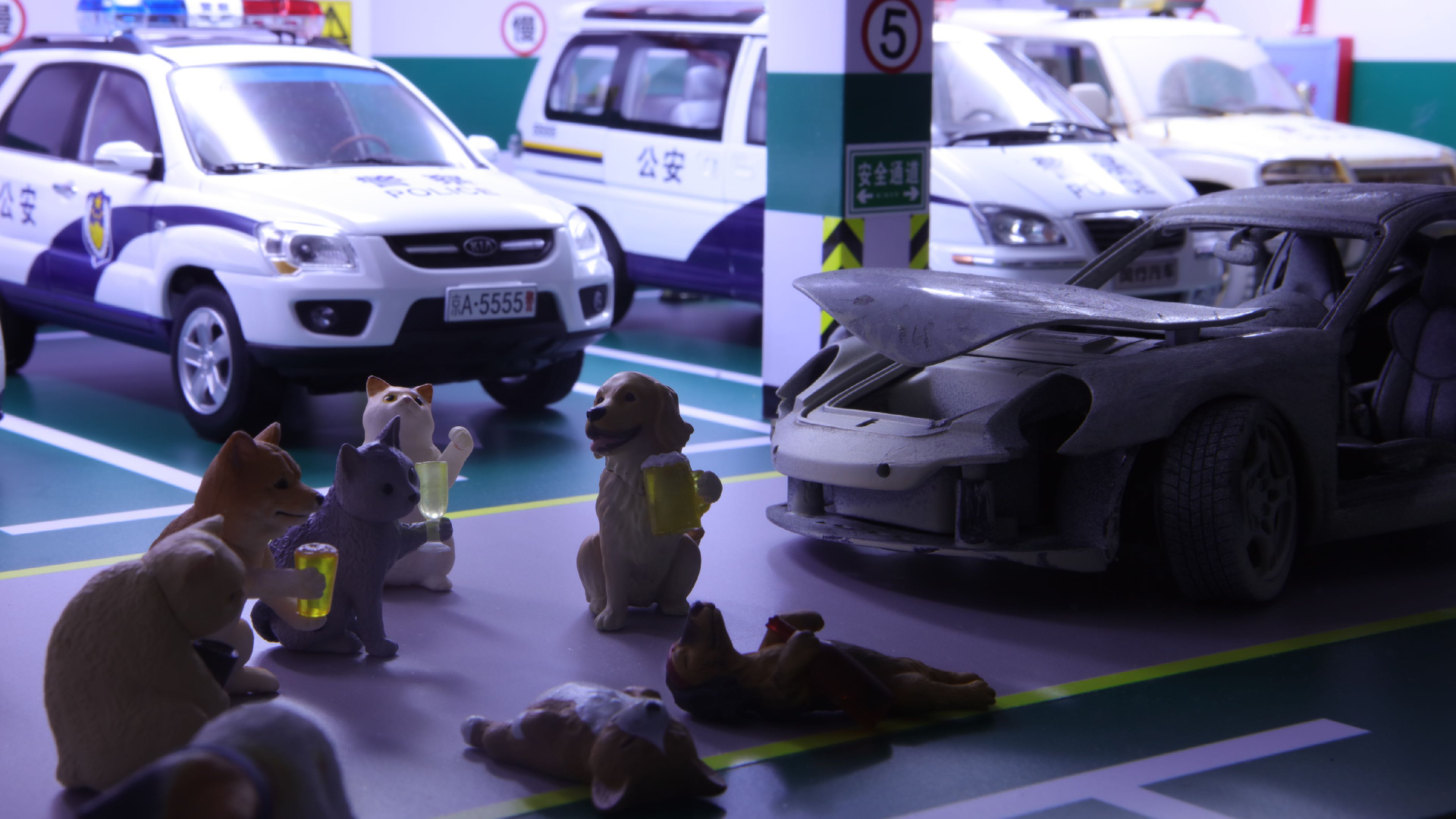
And also the theme of a studio. Imagine that during World War II, Hitler went to Paris and built a studio to draw human models. As we know, Hitler studied art, but was not admitted to the academy of fine arts due to poor performance. This world would be different if he had been admitted to the academy. So I imagined such a scenario. In another example, in a theme of a decisive battle, a robot in Shanghai is very powerful and intends to dominate Shanghai. Upon hearing this, Ultraman and other heroes departed from Japan and fought against the robot to defend Shanghai. These stories combine animation and comics we looked at with some more outlandish fantasies.
These things are depicted elsewhere. The robot called the Chinese Cannon is very famous. I heard of it previously, but could not find it. I accidentally bought a kit online and assembled it. Models of buses and taxis in Shanghai made by the public transport companies are found in the market. Thus, they are very lifelike, including the details of the bus stop signs.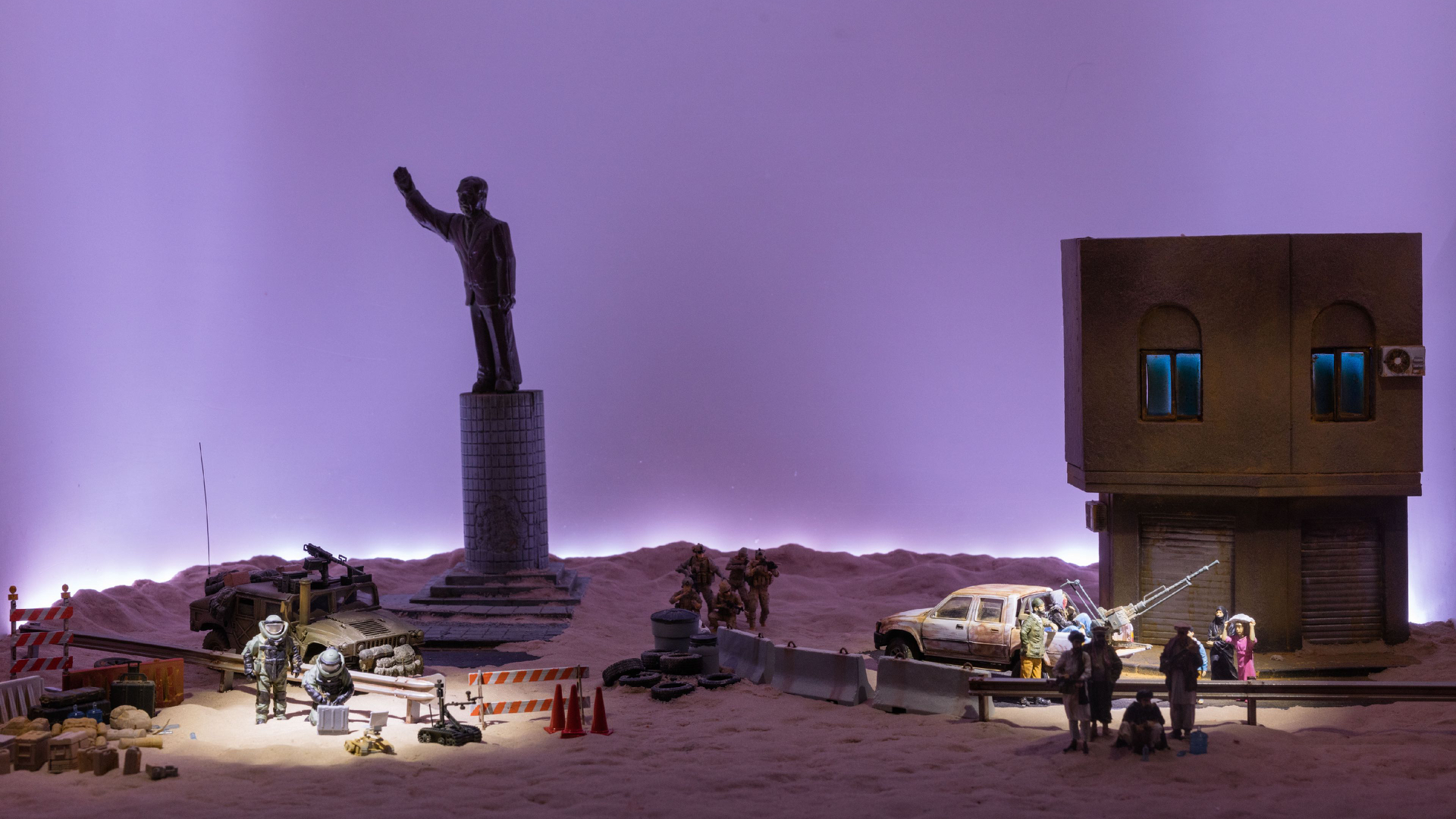
For example, in the landscape box called “the Middle East”, is a statue of Saddam in the distance and residences nearby. Get closer and you will see it is actually divided into two groups, one with a pickup with many anti-American militia around it. The other group is a British-and-American joint mine clearance squad. There is also a landscape box called Return from “the Westward Journey”. Imagine Sha Wujing, Sun Wukong, and White Dragon Horse have arrived at the seaside, captured women warriors from ancient Rome then reproduce a new society. That’s the story.
I am very interested in music and musical instruments. In around 1993, I began to use computer synthesizers, so I usually tried many intriguing musical instruments. This synthesizer for children was bought in Berlin. I love Kraftwerk, a German band and they played electronic music. I later found the equipment they used and then I played it at home. We used multitrack tape recorders for recording because we didn’t have a computer at the time. This is my first professional recorder. And I also have things like synthesizers, because I like music such as Techno and House. Of course, I want to know how this music is made. Later, I found that the music was made with these two small boxes. Therefore, I bought this stuff, and use this for performances.
At the beginning, I created music works mainly for my own works. Music in “Restart of Long March” you just watched or something was made by myself. A few years ago, I suddenly became attracted to drumming. Then I found that I could not play it alone. So I contacted Wu Na, New Trousers, CAVIA and other friends to create performances together. Of course, each performance was not the same. This section is my performance with Wu Na at 403 Center in Wuhan. I employed synthesizers and drum machines, while Wu Na played the Chinese zither. People generally think such a combination may not be good. But in fact, we share a common understanding of the art. When these instruments are put together, they present a feeling of conflict as well as harmony, so I named this performance “Short Wave”. Imagine we search on a shortwave radio signal from a receiver and the music you like will penetrate the noisy environment with electromagnetic interference and reach our ears.
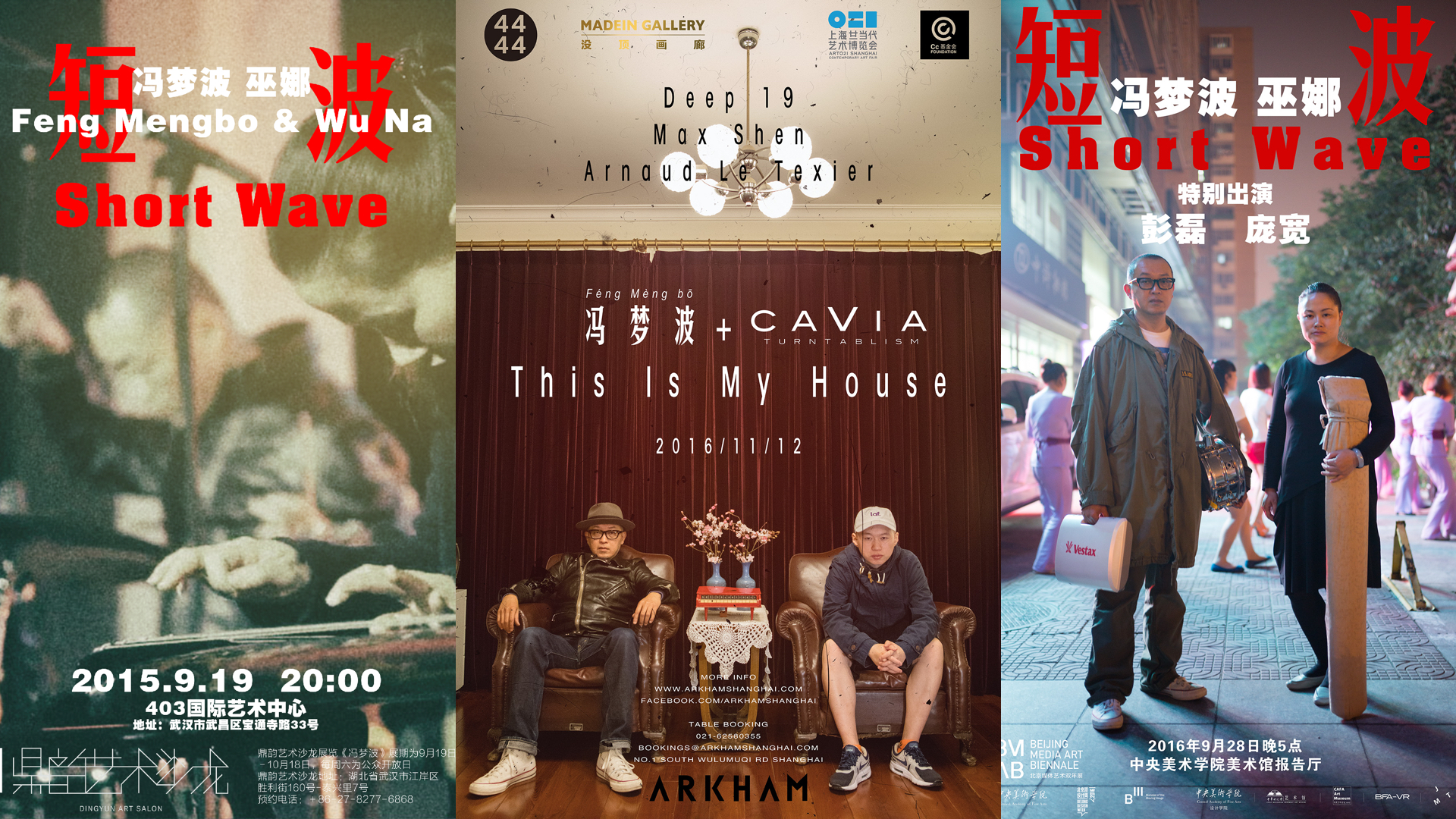

In fact, our generation grow up with picture-story books, which is the artistic enlightenment during our childhood. Ask anybody, even Professor Xu Bing, this is also the case. Because there was no TV or the Internet, picture-story books were a world. You can know about the world through this window, and learn a lot from picture-story books, including how the stories are written and how the pictures are drawn. Picture-story books are highly important to me. These were basically bought by my family for me. I still preserve one hundred books or so.
Last October, I initiated an exhibition named Shanghai Bund with Yang Jun with Dashi as the curator. At that time, I planned to bring together these works, like a street stall. Yang Jun’s room looked like a stall selling carpets, with huge oil paintings hanging on the walls. I neatly stacked the manuscripts of picture-story books of around 108 pages. Dashi set up a stall of real picture-story books in this space. After visiting the exhibition, the audience could visit the book stall and take one away. That’s it.
The way I draw the pictures in the picture-story books is very traditional. After seeing them, many people asked whether I created drawings on the computer. Actually not. every line is drawn on paper. During the exhibition, every manuscript was A4 size, but real picture-story books should be the size of 92×126(mm). The printed books will still be the size of old books. This is the exhibition site. It is interesting. It is called Duoyunxuan in Shanghai, similar to Rongbaozhai in Beijing, a traditional place.
For the paintings in the picture-story book, I draw the drafts first before the final draft. The book is called “Childhood” and spans the period from the day I was born until my graduation from the elementary school. I have a good memory, and can still remember a lot of details. Of course, the memory about the environment is a bit hazy. For example, the memory of the hutong where the Central Academy of Fine Arts used to be located is gone, because this street has been widened. I visited the street by myself or find the feeling of the old days in a virtual map before drawing it.
This is Tiananmen Square. I used to play there when I was young. You know that there are four paintings of Marx, Engels, Lenin, and Stalin, but the actual sizes of the four paintings at that time may be different in my mind, so they need to be carefully measured on the drafts. During the whole drawing, I firstly made the outline, inserted the words, including the dialog boxes, and then traced everything with a pencil. I then drew them one by one with Chinese brushes.
This work was completed at the end of last year. I was invited to exhibit my works on the International Ink Art Biennale of Shenzhen this year, so I was determined to exhibit these picture-story books. But later, as extremely large ink paintings were usually exhibited on that occasion, I think picture-story books were not particularly suitable. Later, I transformed the books into a video.
For example, the video just shown is actually a slide. Besides reading picture-story books, another great pleasure in our childhood was to see the slides. In the school or somewhere else, a person would be in charge of operating, usually two pieces. When one piece slid in, a person explained it at the same time or through a pre-recorded explanation, and then another one. A story was finally told in this way. The video I just showed imitates the style of the slides in our childhood. For each piece, I read the script, and then explain it, supported by the records of that time. I have nearly one thousand copies of Chinese records at my home, covering almost all ages.
After drawing the pictures in the picture-story books, I plan to finish the second and third volumes next year. The second volume is called “In the World” and the third volume “My Universities”. Anyone familiar with that era knows that Gorky wrote the autobiographical trilogy: “My Childhood”, “In the World”, and “My Universities”. In fact, I will complete my works in this way. The first covers the period from my birth to my graduation from the primary school. The second covers the seven years from my high school life to my graduation from Beijing Arts and Design College . The third one named “My Universities” covers four years at the Central Academy of Fine Arts and the following two years when I exhibited my works at La Biennale di Venezia and went back. It is a history of my personal growth and a complete story.
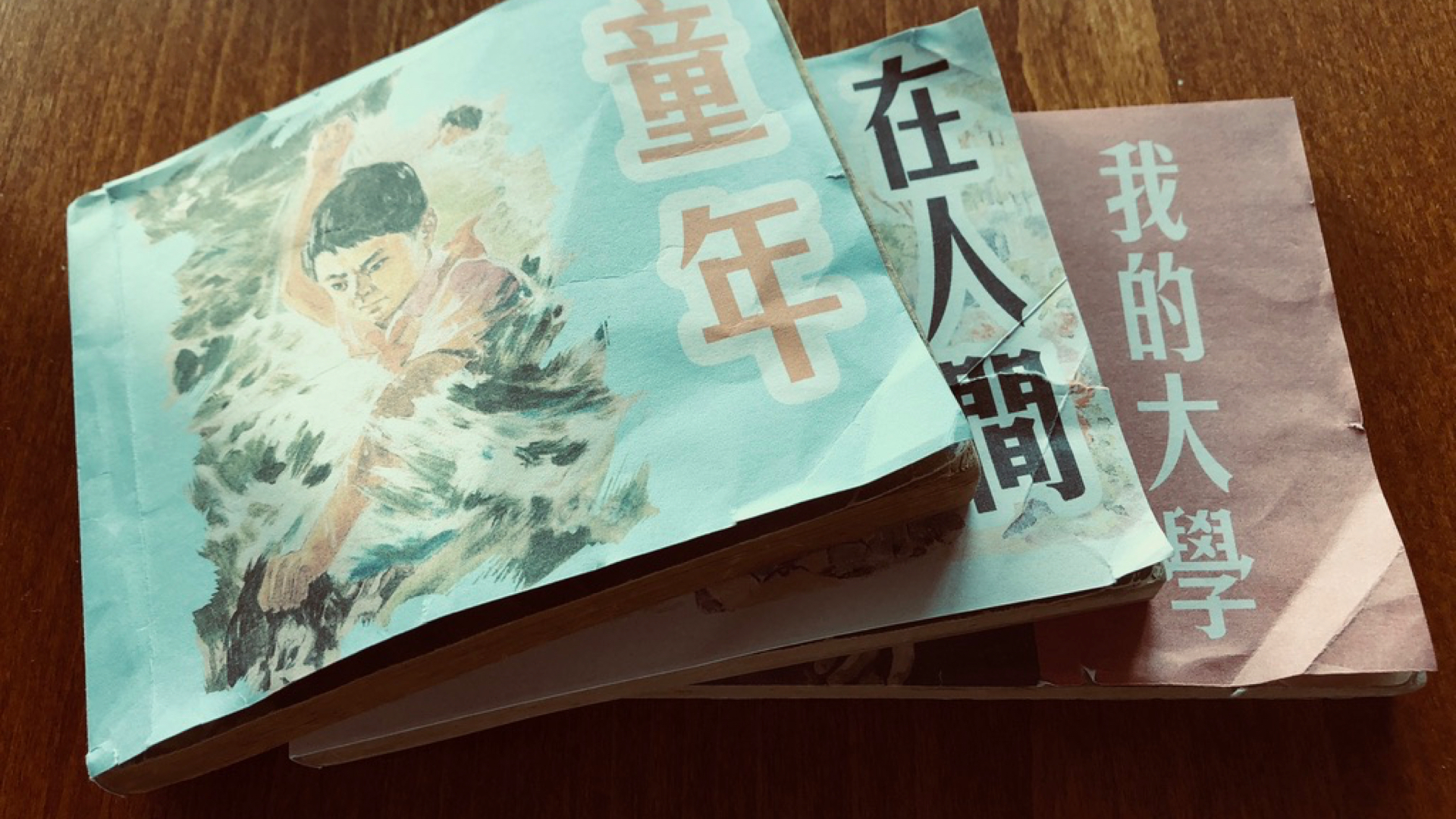
I am now in the Department of Printmaking of the Central Academy of Fine Arts as Director of the Sixth Studio. About two years ago, Professor Su Xinping and the leaders of the Academy invited me to return to the campus and started a new studio in the Department of Printmaking. Later I thought I should follow my personal interests and find some nodes meaningful to my growth. I teach students in this way, to see how to help the younger generation. Our direction is actually called “the archaeological study of media”. The word “archaeology” is now trendy, but we have been doing this for many years, even in the Great Collector. I developed this interest very early on.
The word “media” is different from the general definition. Usually when asked what do you do, we answer that we are doing new media or from media majors. Our concept of media is different, as we express ourselves via the media, no matter if we are in the field of art or other fields. For example, we chat with language and run the public exhibition through photos and texts. For example, programs like ours depend on video, the Internet, etc. I think that all things like this are called the media, and they belong to the scope of archaeology in our studio.
There is a general introduction to the idea of a studio. It is in fact very traditional. Everyone thinks that Feng Mengbo is quite fashion-conscious, but it is not the fact. I am traditional instead. I think I can actually obtain something interesting from traditional and conservative places. When you are aware of these, you can naturally create something new and nobody has done before. Our studio has courses different from those of the common majors. For example, here we have courses in comic strips, history of video games, and models and sand tables, as well as the basics of audio and video and watercolors, and life class regarding human bodies. The courses seem to be reminiscent of the previous Academy of Fine Arts.
Specifically, the Central Academy of Fine Arts has the School of Experimental Art, and its predecessor is the Department of Comic Strips and New Year Pictures. Yang Jun who held an exhibition with me was an experienced teacher from this Department. As the Department no longer exists, and I think comics are hugely important to Chinese culture, I think it is necessary to resume the courses of the Department in my studio. Besides, watercolor painting becomes an activity for the elderly, but in fact, watercolor paintings contain traditions and knowledge. This kind of paper works still has its significance.
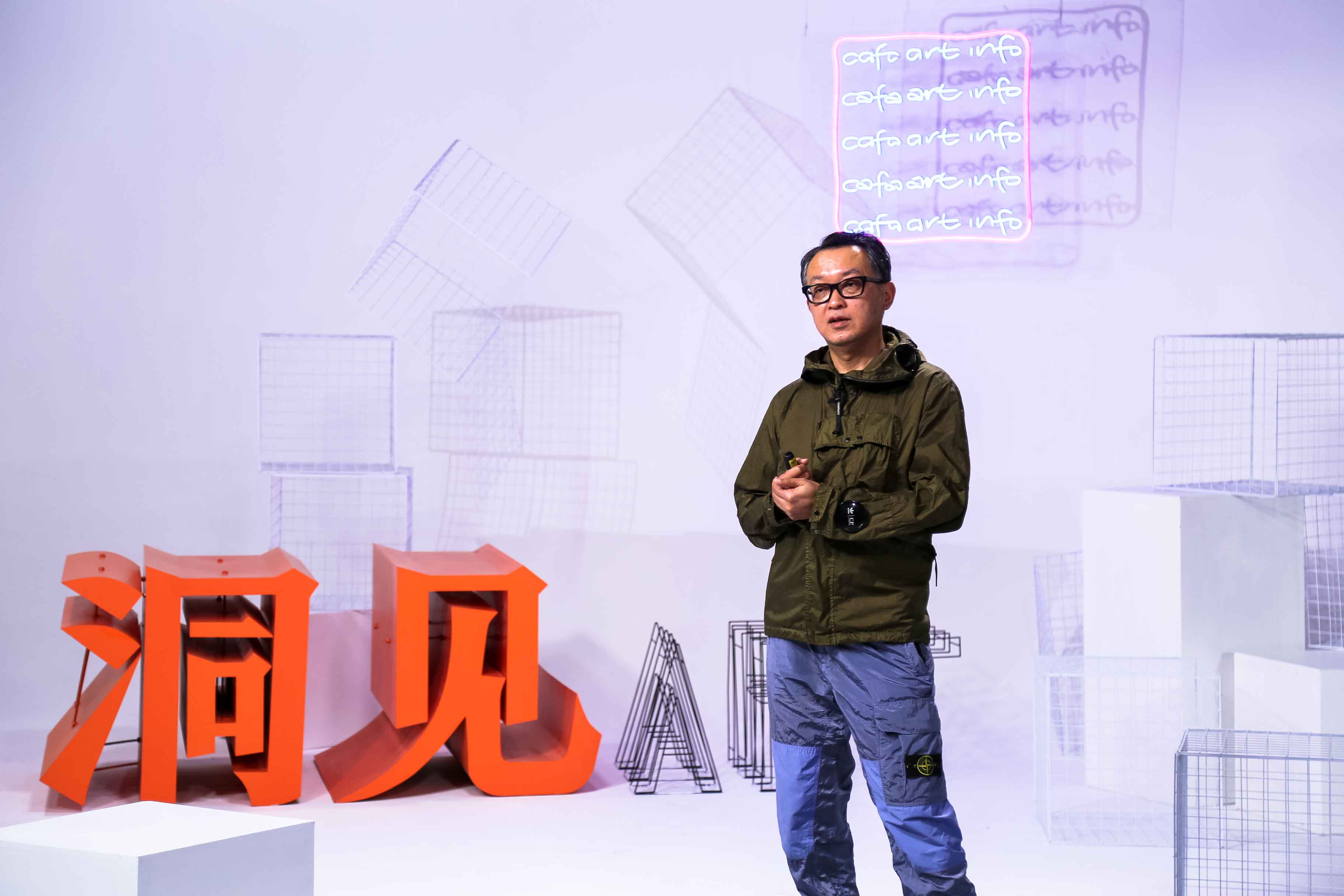
As for the nude sketch class, our students will spend one year in the Department of FundamentalArt, and some even studied at the Affiliated Middle School for four years. However, their knowledge is still exam-oriented without a profound foundation. Now the younger generation cannot match the old generation in terms of styling ability. So I hope that we can offer the nude sketch courses, and then increase their knowledge in some respect about what type of styling is valuable and meaningful for our learning and research.
That’s all for my talk today. Anyone who is interested could just follow my WeChat official account. Thank you!




